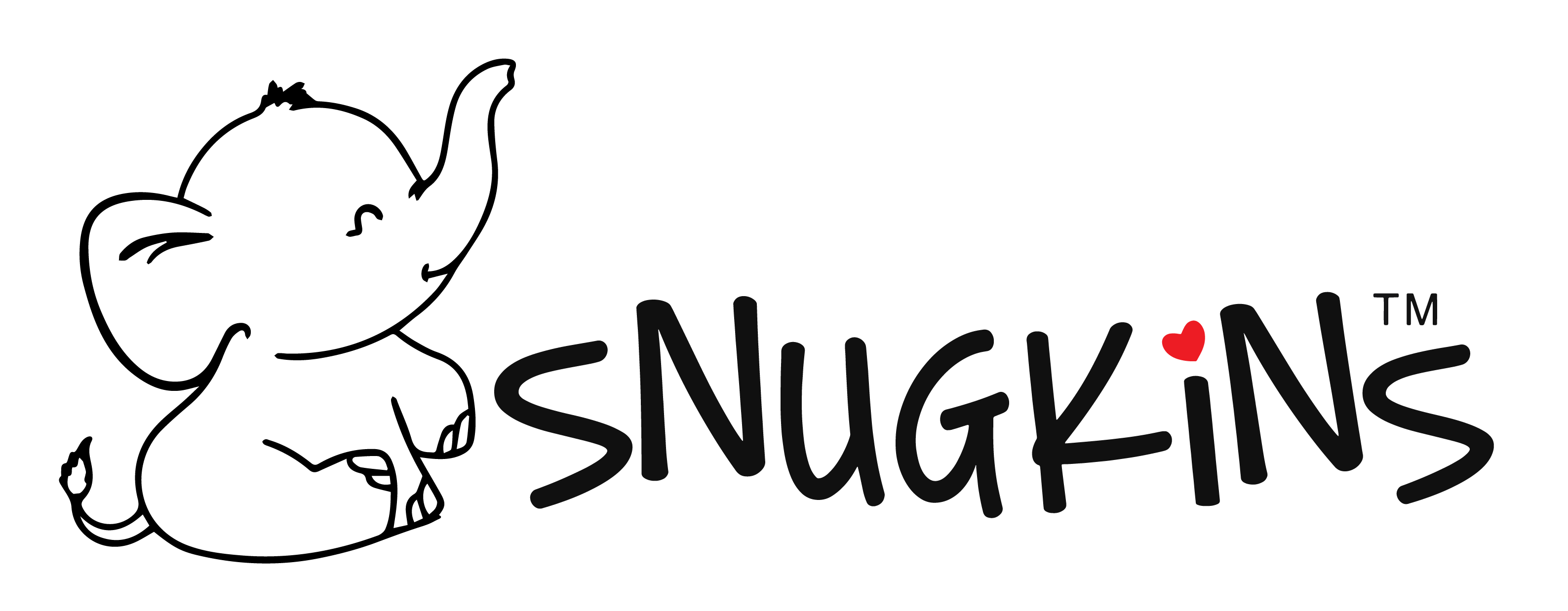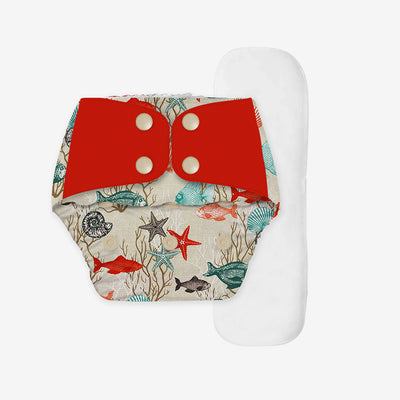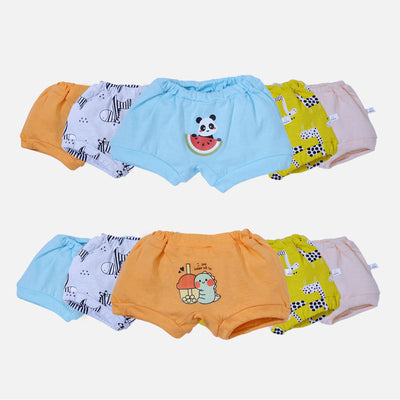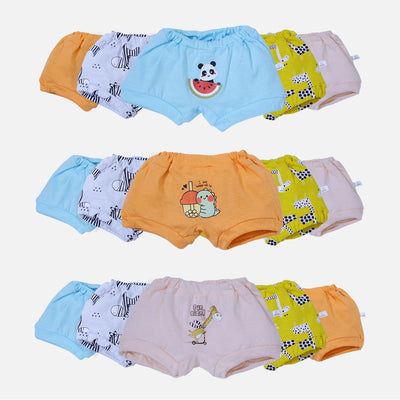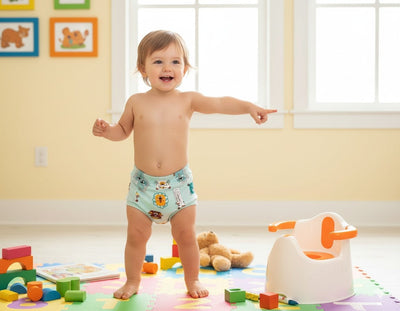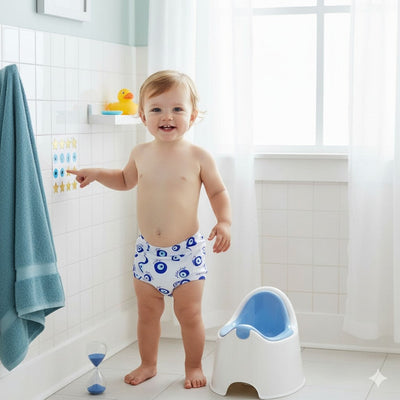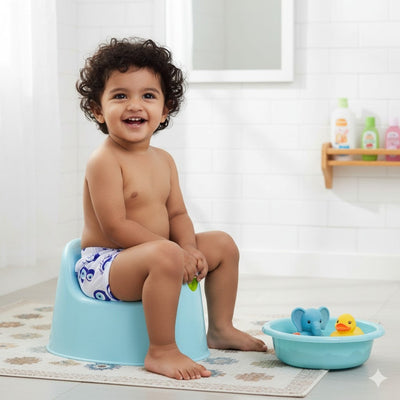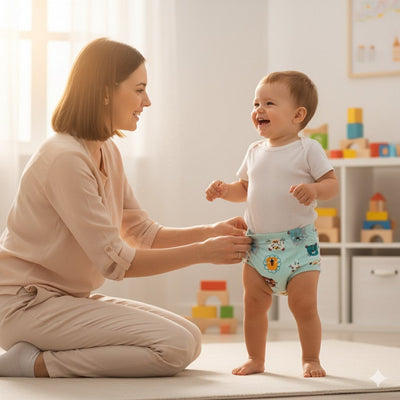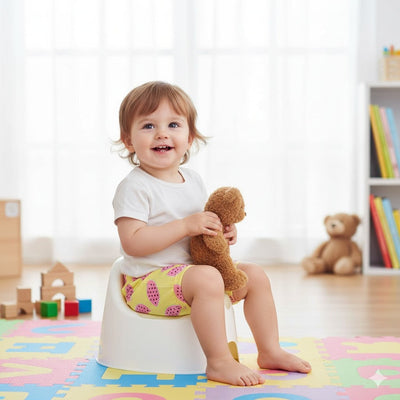Is 5 Too Old for Potty Training? What Parents Need to Know
Starting potty training at age five is not uncommon, but it does call for a more mature and thoughtful approach than with toddlers. By this age, children are in preschool or kindergarten, which means they can reason, negotiate, and clearly express their likes, dislikes, and fears. They’re also beginning to compare themselves with classmates, so wearing diapers when peers are already using the toilet can feel embarrassing or even isolating.
Because of these developmental differences, parents can’t rely on simple routines that often work for 1–3-year-olds, such as frequent potty breaks or playful distractions. Instead, they need strategies that honor a 5-year-old’s growing independence and sense of privacy. This might include open conversations about why toileting matters, creating a step-by-step plan together, and offering choices such as letting the child select their own potty training pants or decide when to take bathroom breaks. Approaching training as a partnership, rather than a directive, helps older children feel respected and more willing to participate.
Understand the Reasons Behind the Delay
Before planning, explore why training hasn’t started or succeeded:
-
Medical or developmental issues such as chronic constipation, bladder concerns, or speech delays
-
Previous negative experiences painful stools or pressure in toddler years, can create fear
-
Life changes, like a big move or sibling arrival, that disrupted early attempts
A quick check-up with your pediatrician ensures there isn’t a physical barrier and reassures your child that their body is healthy.
Communicate Openly and Respectfully
Five-year-olds can understand explanations and express their feelings, so talk about why using the toilet matters comfort, independence, and being “big kid ready” for school or playdates.
Instead of a strict schedule, involve your child in planning bathroom visits. Ask when they feel they might need to go and encourage them to recognise their body’s signals. Discuss how to handle accidents calmly and reassure them that slips are normal. This approach gives your child a sense of control and ownership over the process, making them more confident and cooperative.
Build Skills Through Responsibility
At five, many children enjoy feeling capable and “grown-up.” Instead of just planning bathroom times, focus on teaching self-management skills they can carry into school and play:
-
Body Awareness Training: Help your child learn the subtle signs of a full bladder or bowel. Use simple questions like, “Do you feel your tummy tightening?” so they can recognise urges early.
-
Clothing Independence: Practice wearing easy-to-pull-down outfits and changing into fresh potty training pants themselves. This builds confidence for school or outings.
-
Accident Action Plan: Work out a calm, step-by-step routine for accidents where extra clothes are stored, how to clean up, and when to tell a teacher. Knowing there’s a plan removes fear and embarrassment.
-
Ownership of Progress: Let your child track successes on a personal chart or choose a weekend activity when milestones are met. This reinforces that staying dry is their achievement, not just a parent rule.
Choose Training Gear for Big Kids
At this age, the goal is to give your child just enough backup to feel secure while quickly moving toward regular underwear. Skip diapers altogether and introduce a single set of training gear for the early weeks. Think of it as a bridge, not a crutch.
Start with one or two pairs of soft, breathable cotton training pants. These look and feel like everyday underwear, but can catch a small leak on the way to the bathroom. Use them mainly for outings or the first days at school while you both learn the new routine.
Explain to your child that these pants are temporary helpers, not everyday wear. As confidence grows and accidents become rare, switch to normal underwear so they feel proud of their progress.
Build Confidence Through Independence
Empower your child to:
-
Flush, wash hands, and change into clean padded underwear independently
-
Help with laundry of training pants (age-appropriate tasks)
-
Track progress on a sticker chart or calendar
Ownership reduces resistance and boosts pride.
Handling Social Settings
School-age children worry about what friends might think. Coordinate with teachers or caregivers so your child can use the restroom without drawing attention. Reassure them that accidents happen to many kids and are nothing to be ashamed of.
Stay Positive and Patient
Avoid shaming language or punishments. Older kids may show frustration if they slip up, but gentle encouragement and calm clean-ups work best. Remember, the goal is lasting success, not speed.
Key Takeaways
-
Five isn’t “too late.” Many children train later due to health, readiness, or life changes.
-
Older kids need partnership. Conversations, agreements, and privacy matter.
-
The right gear builds confidence. Snug, breathable potty training pants like those from Snugkins help children feel secure and mature.
-
Consistency wins. Regular bathroom times and positive reinforcement create steady progress.
FAQs
1. How can I motivate a 5-year-old who resists toilet training?
Involve your child in setting goals, let them choose fun padded underwear, and use small rewards for each success to keep motivation high.
2. Should I be worried if my 5-year-old still needs toilet training pants?
Not necessarily. Many children start later for medical or emotional reasons. With consistent practice and cotton training pants for support, most catch up quickly.
3. What’s the best type of training gear for an older child?
Soft, absorbent padded underwear like that from Snugkins offers discreet protection while feeling like real underwear, which is key for a confident transition.

